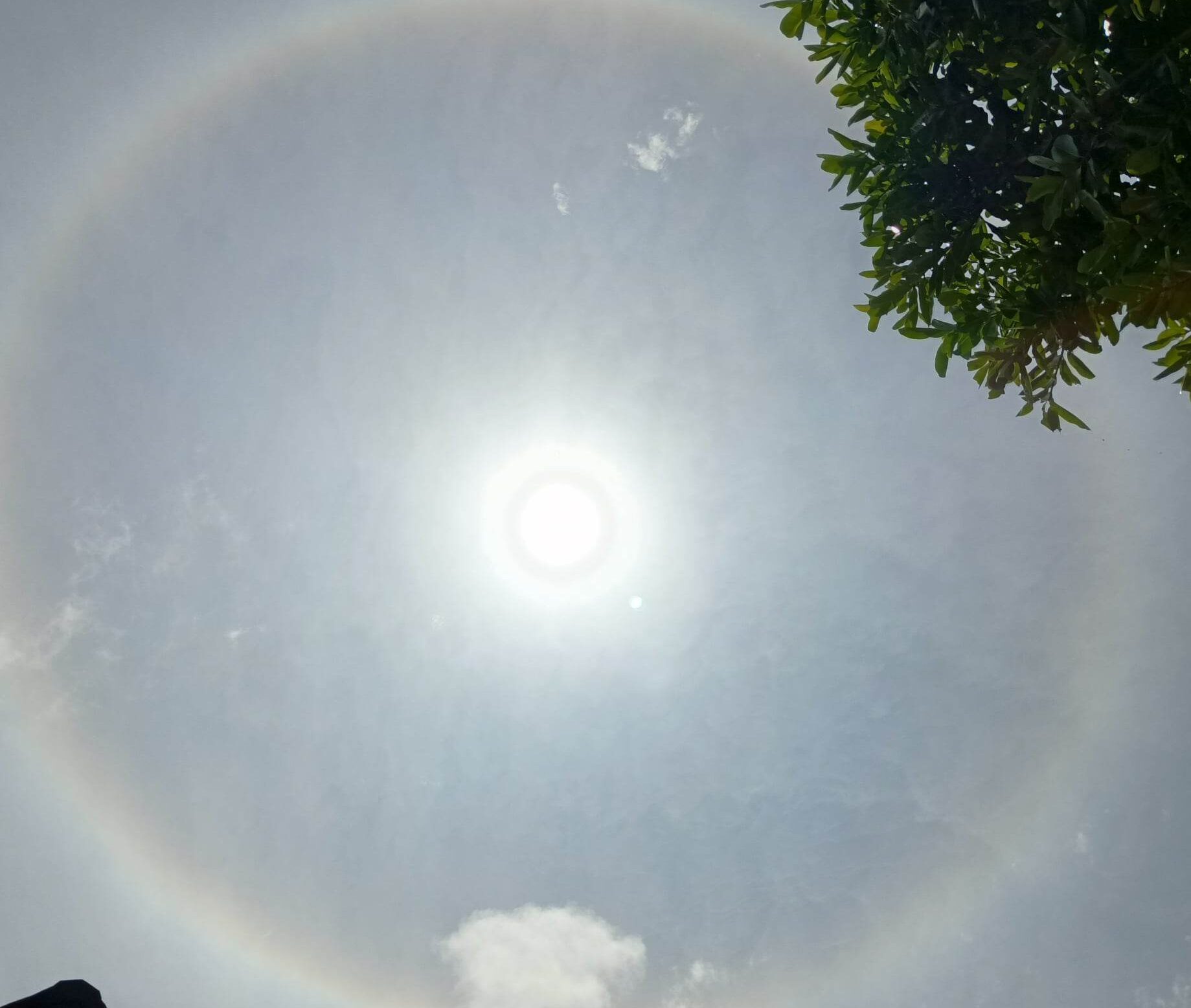
A sun halo, which is called “mariyes” in Batanes, appears in the skyline of Itbayat town on Tuesday (April 2). The solar phenomenon happens during a transition from cool to warm dry season heat. Photo by Nathan Alcantara
ITBAYAT, Batanes — Residents of this island municipality witnessed a ring-around-the-sun phenomenon starting around 9 a.m. until nearly 2 p.m. on Tuesday, April 2.
Itbayat Ivatan indigenous people call this sun halo event “mariyes.”
A sun halo appears due to the refraction of sunlight as it passes through ice particles suspended in thin, wispy cirrus or cirrostratus clouds at high altitudes.
Photo by Councilor Cleo G. Gonzales
The light, bending at a 22-degree angle through hexagon-shaped ice crystals, forms the distinctive ring halo around the sun.
Jerald Manzo, a government worker in this town, said the event indicates that the sea would have strong tide currents, which may not be optimal for hand or oar-driven fishing boats.
Experts said a sun halo is a normal event, especially as the season is in transition from cool to warm dry season heat, and this may not necessarily be a portent.
But based on indigenous knowledge, some celestial events may affect local conditions.
The Philippine Atmospheric, Geophysical and Astronomical Services Administration expects a weather disturbance to enter the country this month. INQ